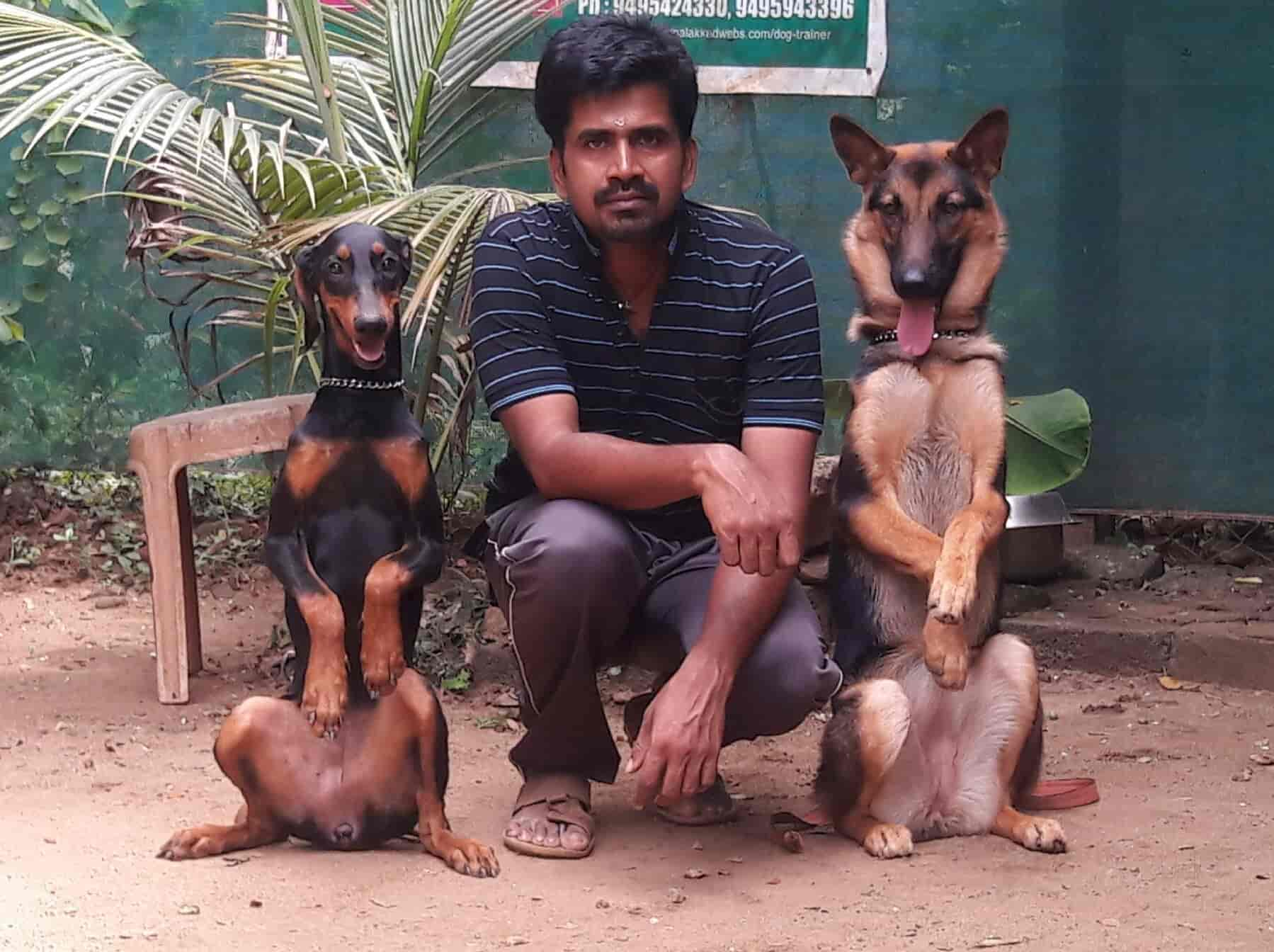Essential Dog Educating Methods for a Lifetime of Great Behavior
Effective dog training is fundamental to cultivating a well-behaved companion that enriches our lives. Essential strategies, such as favorable reinforcement and consistent command training, not only enhance obedience but additionally enhance the bond between owner and pet dog. Comprehending canine behavior and using socialization approaches can stop prospective issues before they emerge. The trip doesn't finish with standard commands; resolving behavioral obstacles needs a nuanced technique that several ignore. What are the essential components that can transform your training experience and guarantee lasting results?
Understanding Dog Actions

In addition, understanding the inherent impulses and drives of a canine-- such as victim drive, social interactions, and territorial actions-- allows trainers to anticipate and manage specific actions. A pet with a solid prey drive may require different approaches than one that is extra socially inclined.
Furthermore, very early socialization and direct exposure to various environments significantly affect a canine's behavior and personality. Positive experiences throughout essential developmental periods can lead to well-adjusted grown-up pet dogs, whereas adverse experiences might cause stress and anxiety or aggression.
Positive Support Approaches
Amongst the various dog training strategies, positive reinforcement methods attract attention for their efficiency and ability to strengthen the bond between pet and fitness instructor (Ohana K9 Academy). This approach stresses rewarding wanted behaviors rather than penalizing unwanted ones, cultivating a more cooperative and trusting partnership
Positive support can take numerous kinds, consisting of treats, praise, toys, or playtime. The trick is to supply prompt rewards when the dog shows the desired behavior, allowing them to make the connection in between the activity and the favorable result. As an example, if a pet dog remains on command, giving a treat as soon as possible enhances that actions, making it more probable to be duplicated.
Uniformity is important in favorable support training. Instructors need to make use of the very same hints and incentives to prevent puzzling the pet dog. Furthermore, varying the rewards can keep the pet's interest and motivation, transitioning from frequent treats to periodic praise or play as the pet masters the actions.

Fundamental Command Training
Structure on the foundation established through favorable reinforcement techniques, fundamental command training acts as content a critical action in creating a hospitable canine. This training typically includes important commands such as "rest," "stay," "come," and "down - Ohana K9 Academy." Each command plays an essential role in cultivating efficient interaction in between the pet dog and its proprietor, boosting the overall bond
Start with brief, focused sessions lasting no more than 5 to 10 mins to keep your dog's attention. Utilize high-value treats as incentives, guaranteeing the canine connects right behavior with positive end results.
Persistence is crucial; canines might need countless repetitions to comprehend commands totally. Gradually increase the complexity by introducing variations or distractions when your dog dependably responds. Routine method reinforces discovered commands, solidifying them in your canine's behavior repertoire. Inevitably, fundamental command training not just promotes obedience however likewise improves safety and security and helps with pleasurable interactions during walks and play, preparing for more sophisticated training methods in the future.
Socialization Techniques
In the world of pet dog training, socialization techniques are essential for growing a well-adjusted and positive canine companion. Effective socializing includes exposing your dog to a selection of atmospheres, people, and other animals in a controlled and positive manner. The key purpose is to assist your dog create a comfort level with varied experiences, which can significantly reduce fear and anxiety in strange situations.
Begin socializing during the vital developmental home window of 3 to 14 weeks, when young puppies are most receptive to brand-new experiences. Present your canine to various settings, such as parks, city locations, and homes with various other animals. Make sure these encounters declare by using deals with and appreciation to strengthen look at here now great actions.
Group training courses are an excellent means to expose your pet dog to various other pet dogs and people page in a structured setting. This permits supervised interactions, aiding your dog discover ideal social cues. Regular trips and playdates with genteel dogs can additionally boost social abilities.
Addressing Behavioral Problems
Resolving behavioral issues in pet dogs is an essential element of training that calls for an organized technique and understanding of canine actions. Common issues such as barking, chewing, hostility, and stress and anxiety can come from numerous aspects, including absence of socialization, insufficient exercise, or perhaps medical issues.

Additionally, developing a structured regimen that consists of routine workout and psychological stimulation can significantly relieve behavior problems. Interactive toys can maintain a canine involved and minimize destructive propensities. In cases of extreme hostility or anxiousness, speaking with a professional pet dog trainer or a vet behaviorist may be needed.
Conclusion
To conclude, effective pet dog training techniques, including positive support, fundamental command training, and socialization, are vital for fostering etiquette throughout a dog's life. Resolving behavioral concerns with an organized technique not just boosts obedience however likewise strengthens the bond in between dogs and their proprietors. By applying these strategies regularly, pets can become well-adjusted buddies, with the ability of browsing numerous atmospheres and communications with self-confidence and ease. Therefore, establishing a structure for an unified partnership is vital.